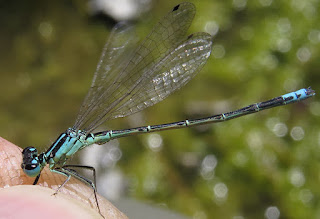June 22-28, 2015
After the Dean Hale Woodpecker Festival, my dad came to Sisters to pick me up, and I had a week off based at his and my stepmom’s house in Corvallis. But rather than stay in Corvallis the whole time, I rented a car and decided to visit the southern Oregon coast for a couple days. I hadn’t seen my friends Dave and Kathy in a while, and I consider the Curry County coastline to be one of the most beautiful places in Oregon, if not the entire US.
My first morning of birding found me meeting my friend Terry in Langlois and then spending an hour or so in some hilly, grassy pastures within about four miles of the coast – a habitat you just don’t see anywhere on the Oregon coast north of here.
Western Meadowlarks and Lazuli Buntings were common here, and I recorded the dialects of this pugetensis White-crowned Sparrow here. Here they sounded much like the ones in the northern Oregon Cascades as well as the Puget Sound area, but unlike the ones from northwestern and outer coastal Oregon.
A pair of Common Yellowthroats were apparently feeding young in a nest in some taller grass by the road.
This Violet-green Swallow posed nicely for photos.
I then birded several headlands as I worked my way down the coast nearly to the California Border. A large group of cormorants (Brandt’s and Pelagic) and Pacific Loons were feeding just south of Cape Blanco.
I birded through the campground and recorded the recently described Type 10 of Red Crossbills here.
This is the beach beyond the campground.
This Black Phoebe juvenile was at the Arizona Beach wayside
I then took a short hike down the Cape Sebastian trail, which starts on the highest part of Highway 101 in Curry County.
This is looking down from one of the highest points on the trail before it starts to descend to the beach. I noticed what at first looked like an orange lichen on the rocks.
Upon closer inspection, it was certainly no lichen, but I didn’t know what it was. Thanks to my friend Tim Rodenkirk, I discovered that this is a free-living form of a Trentepohlia sp. algae. Some species, quite possibly this one, also combine with a fungus to form a lichen.
I hiked down to the Indian Sands area of Boardman State Park. The Wildflowers here were gorgeous.
This is Calochortus tolmiei, Tolmie's Star-tulip.
Tim helped me with the ID of this composite, Lasthenia ornduffii, Ornduff's Goldfields. It turns out to have a very restricted range, found only a few areas of coastal Curry County.
I looked for but did not find any vagrants at several places south of Brookings. This Song Sparrow was at the mouth of the Winchuk River, just north of the California border, so it should be the subspecies cleonensis, but I can’t see any difference from morphna from farther north.
This Wrentit came in close to my whistles.
The one rarity I did chase on my way back north to Bandon was this Black-headed X Rose-breasted Grosbeak hybrid in the willows of the Pistol River.
On my second day on the coast I decided to wander around Floras Lake in northern Curry County. I took a long hike through the coastal forest down to Blacklock point and back on the beach. In the dunes were many of this morning glory Calystegia soldanella, Seashore False Bindweed.
The Rhododendron macrophyllum, Pacific Rhododendron were still in bloom.
This shrub was formerly Ledum glandulosum, but a change in the higher taxonomy as well as some species-level rearrangement has given it a totally new binomial, Rhododendron columbianum. Thankfully we have more stable English names and can still call it Western Labrador Tea.
I was the only person on the beach for at least a mile in each direction here.
I scanned the ocean frequently on my way back and was rewarded with a rare June record of Black Scoter. It was almost impossible to get a photo, but I did manage this one for the eBird record. This exact location turns out to be known as the most reliable winter location for Black Scoter in the county.
I then finished my two-day retreat hiking out the south jetty of the Umpqua River before heading back inland. I enjoyed the large numbers of noisy Heermann's Gulls at the tip of the jetty, and got a picture of this immature Brown Pelican with his own kleptoparasite.
Back in Corvallis, I made it out only a couple times, otherwise spending my time working on the computer, trying to catch up and prepare for future tours, as well as knitting from time to time and of course playing cards and marbles with my parents every evening. I spent one full morning with my friend Jamie Simmons looking for birds, butterflies, and odonates near Alsea Falls and the Alsea area. It was surprisingly diverse as early as mid-morning.
I managed photos of eight species of butterfly and one very cool dragonfly at our first stop.
Adelpha californica, California Sister
Boloria epithore, Pacific Fritillary
Epargyreus clarus, Silver-spotted Skipper
Limenitis lorquini, Lorquin's Admirals
Parnassius clodius, Clodius Parnassian
Pieris oleracea, Mustard White
Polygonia satyrus, Satyr Anglewing
Vanessa atalanta, Red Admiral
Octogomphus specularis, Grappletail
Another stop resulted in this Ischnura perparva, Western Forktail.
A brief stop at a quarry resulted in this screaming Peregrine Falcon perched on the rocks. It was later confirmed that a pair had nested here.
Another stop and another butterfly, Strymon melinus, Gray Hairstreak
Taricha granulosa, Rough-skinned Newt
Another couple photos – this Purple Martin was just north of Corvallis, apparently nesting in a snag in a regenerating clearcut.
And this arctic-breeding Least Sandpiper, already in late June at the Philomath Sewage Ponds, is at the forefront of the southbound “fall” migration.












































No comments:
Post a Comment